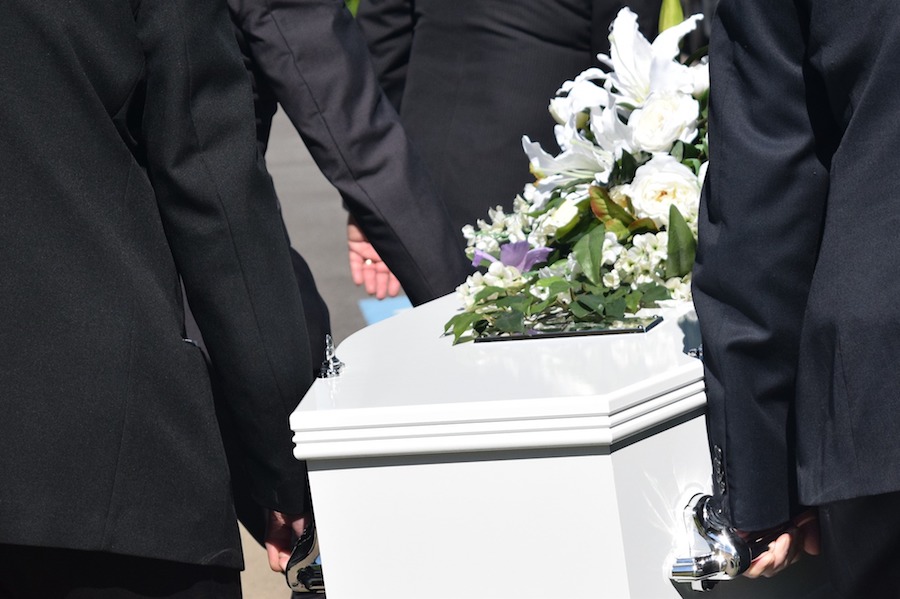Funeral planning may sound morbid, but it can be your final gift to your family. You’ll have the opportunity to ensure the service is a reflection of your life with the music you’d like played or the readings you want included. It can save your family from having to guess your final wishes, such as the desire to be cremated. It can also save them money.
A funeral can be one of the biggest expenses people have and a financial burden to those left behind. The more you understand what goes into planning a funeral and the costs involved, the more prepared you or your family will be to make final decisions.
How much does a funeral cost and what’s included?
Funeral costs have been rising steadily over the years. According to the National Funeral Directors Association, the national median cost of a funeral for 2017 was $7,360, up from $7,181 in 2014. If a vault was included, which is typically required by a cemetery, the cost increased from $8,505 to $8,755 in that same period.
That didn’t include costs such as cemetery expenses or a headstone. There are other expenses too that may come out of your pocket or be absorbed into the overall funeral home expense. This includes items such as flowers, obituary fees and extra copies of the death certificate.
Understanding how the funeral industry works will give you a more realistic cost of a funeral.
How the funeral industry works
There are three main components of funeral planning, each with its own list of expenses: the funeral home, the cemetery or crematorium and the graver marker. When a loved one dies, the funeral home is often the first place the family calls. In their grief, it’s easier for them to turn over all the arrangements to the funeral director, who knows what needs to be done and whom to call.
While we want to think the funeral director has our best interests in mind, the funeral home is a business and it’s the director’s job to make money for it. When the director tells you the funeral will cost $7,360, that doesn’t include costs for the cemetery or grave marker. So the family is surprised when they’re given a large bill of sale or are asked for more and more money as time goes on.
Funeral Home Costs
More often than not, embalming is legally required or necessary if a viewing is planned. Under some circumstances, such as cremation or burial shortly after death, this step can be eliminated and skipping it can save you hundreds of dollars. The NFDA’s 2017 costs estimated embalming to be more than $700. By law, the funeral home must tell you if it isn’t necessary.
If you’re planning a traditional funeral, a casket will be the most expensive purchase, at least $2,000. Caskets are made in a wide range of materials, from plastic to mahogany and bronze. A funeral home is legally obligated to show you a price list before you see the displays. The lower-priced caskets probably won’t be shown, so you may have to ask to see them.
Saving Money
One way to save money on a casket is to purchase one from a third party. By law, the funeral home must let you use the casket you bought and can’t charge you a fee for using it.
Another way to save money is through cremation. If you’re having a viewing of the body before it’s cremated, you can rent a casket. If you don’t plan to have a viewing, the funeral home must offer you a plain wood box or other non-metal container that is cremated with the body.
There are many other services and products the funeral home will charge you for. They include items such as use of a hearse to transport the body, the facility for final viewing, dressing and grooming the body and printed material such as a register book.
The funeral home is required to show you a written statement of all the charges you can expect. But there are other costs besides those at the funeral home.
Cemetery Costs
In addition to the cemetery plot itself, which could easily cost $1,000, there are a few other expenses a cemetery may charge. A grave liner or vault is not required by law; however, a cemetery usually does require something surrounding the casket to prevent the grave from sinking over time. You can save some money if you purchase a grave liner or vault from a third party rather than from the funeral home or cemetery. Expect to also pay a fee for digging the grave, sometimes called the open/close fee.
A Final Cost
Finally, there is the cost of a headstone or grave marker to consider. If cremains or the body is buried in a cemetery, a marker is required. Grave markers lie flat on the grave and are typically bronze or granite; a headstone is about two-feet high and monuments are larger. These typically run from $1,000 and up, depending on if you purchase a marker or headstone.
It is Possible to Save Money
While funeral planning can be expensive, it is possible to save money. Choosing cremation can save you a little with casket rentals, buying a flat marker rather than a headstone and buying some items through third parties will all help.
The best way to save some money is to comparison shop between funeral homes in your town. Parting.com has a link that helps you compare costs when you type in your hometown and answer a few simple questions.
Veterans
Finally, if your loved one was a veteran, you may be eligible for assistance with burial costs. Contact the U.S. Dept. of Veterans Affairs to find out more.
If you would like to learn more about estate planning, consider signing up for one of our free workshops. Or contact the office of Constance Aschenbrenner to set up an appointment where you can begin planning your estate.





